A journey to the end of the earth: the Iceland where tourists are yet to go
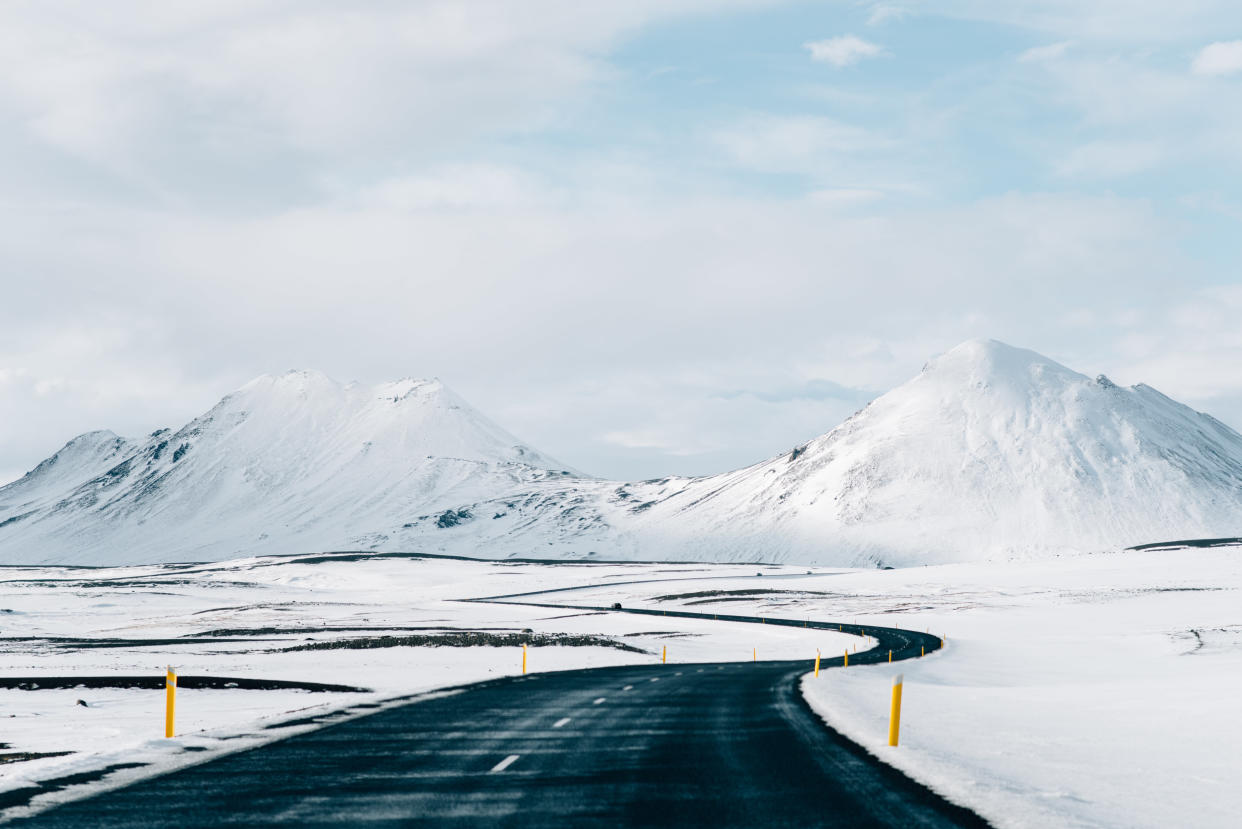
Skirting the north coast of Iceland feels much like tight-rope walking on the edge of the world. As I followed the road that hugs the undulating cliffs it was daunting to think there was very little but a vast expanse of water that separated my 4x4 from the North Pole, the most extreme north of our planet. It was yet more daunting to think there was very little that separated my 4x4 from the vast expanse of water. Consequently, I paid the lashing waves below and their mind-boggling horizon little attention and focused entirely on keeping the car on terra firma.
Once pulled over on a more secure section of route 82, an at-times nerve-racking route that links Iceland’s second city, Akureyri, with my destination of Siglufjordur, I was able to fully appreciate the sensation of extremity. Before me were views of the kind that would give Flat-Earthers hope.
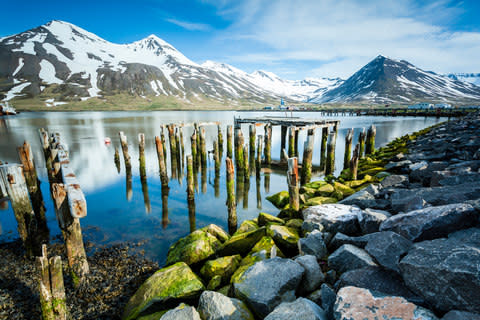
But it was February and the light was fading fast so I had to make tracks. Just under an hour of slightly less hairy driving later and I arrived at perhaps Iceland’s most important fishing town.
The landscape inhales and exhales, each breath fresher, cooler, colder than the last
Of course Siglufjordur's importance was then and not now. It was here in the 1880s that Iceland entered the herring fray, following in the footsteps of their Norwegian rivals. By the Fifties, Siglufjordur, once a unremarkable hamlet, was booming, its herring at times accounting for 20 per cent of the nation’s total export. Each summer the town would swell to four times its normal size with men, women and children drawn to the fjord by the gold rush promise of hauling in the silver of the sea; a migration that earned the region the nickname of the Atlantic Klondike.
In 1969 the herring disappeared, the industry collapsed and the adventure was over. Its salting stations, factories and piers were abandoned, while fisherman scuttled their boats in the harbour. The town fell into depression.
Today, Siglufjordur buzzes again. It has reinvented itself both as a destination in its own right and base to explore the wilds of the north and partake in the activities it has to offer. Viewers of BBC Four’s Trapped might recognise the town’s Scandi classic pastel-shaded cityscape, especially its still harbour and disused Industrial Revolution-style chimney, from the 2015 Icelandic noir drama series. Well, bar barrels of stormy weather rolling up the fjord, trapped here you are most certainly not.
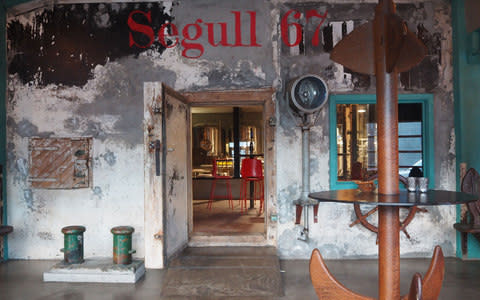
I dumped my bags at my harbourside accommodation, the Siglo Hotel, and headed to Segull 67, a brewery opened in one of the old abandoned herring warehouses. It is achingly, effortlessly cool and if notwithstanding the faint whiff of 50-year-old fish it could easily be one of the craft set-ups of Brooklyn or Hackney. Over an autumn beer (they brew by seasons), I mulled over the options for my itinerary - skiing, snowshoe trekking, a dip in a geothermal “hotpot”? A wealth of possibilities in a land that at first feels so barren. I chose horseriding.
Early the next morning I headed yet further north and round the coast. My guide, Beda, a young Swiss chap who stumbled upon Siglufjordur while travelling and decided to stay, drove so I’m furnished with the freedom to gaze at the never-ending ocean without fear of drifting into it. The scenery is impossibly beautiful. Where the south of the country, most and increasingly popular with visitors, boasts staggering scenery, its appeal bolstered with big-hitter attractions such as waterfalls, glacier lagoons and geysers, the north offers the same but less razzle dazzle and more rugged. Less PG and more 18.
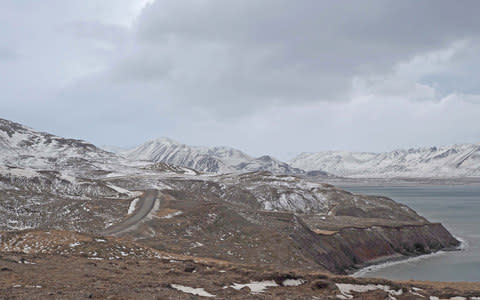
This winter Iceland saw the least snow in living memory so instead of blanket white, the hills and fjords stretched out before us in dashes of greys, the road rising and falling in and out of view along the coast, like a ribbon draped in haste. As with the previous day, the boundary between the land and sea, between you and a watery grave, is very thin. But this is the appeal of such outposts - the slim margin between your experience and nature’s. Indeed, when the wind kicks up, and the weather closes in, the gap between your person and the elements becomes uncomfortably negligible.
I steadied myself to imagine how my surroundings would have looked in the ninth century - raw, unforgiving, beautiful
Funnily enough, my outing coincides with Sunshine Day - a day Icelanders around the island’s cusps eat cream cakes to celebrate the sun returning to the fjords after months of laying too low in the sky. And so, as I arrived at the stables at Langhús farm at Skagafjordur for my horse-riding adventure I’m immediately handed a homemade cream cake by owner Lukka. Yet, as we approached our steeds, I saw no sun.
Nay bother, wiping crumbs from my beard with one gloved hand I take with my other the reins of Summa, a fine specimen of an Icelandic horse. As I practiced my turns in the paddock, Lukka explained its instructions - can you tell I’m not a natural born horse-rider?
29 reasons why Iceland is incredible
“Oop oop to go faster, woaaah to slow down,” she said. “Icelandic horses are special as they have two more gaits than an average horse.” One of which, I learned, is flugskeið or “flying pace”. After making it clear with Lukka - and Summa - that I actually only have one gait (we’ll call it a steady amble) we set off for the hills.
Leaving the mapped roads behind us, we walked single file on rough track smattered with ice and snow, at times having to stop when the buffeting from the wind became too ferocious. Summa (who says the Icelandic don’t have a sense of humour?) was strong and steady, while I regaled her with tales of “woaaah” and “that’s not a steady amble”. The landscape inhales and exhales, each breath fresher, cooler, colder than the last.
Over the noise of the gales and in between Summa navigating her own path away from the pack, Lukka told me that it was here, in this valley of Flokadalur, that Floki Vilgerdarson, the first Norseman to sail deliberately to Iceland, was buried.
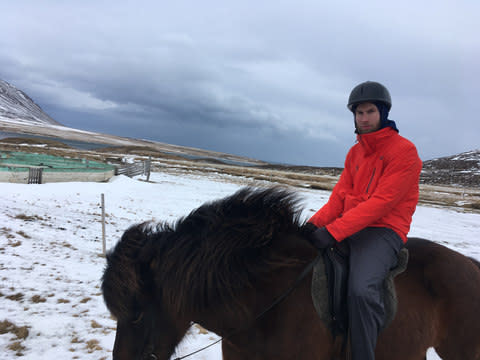
In the ninth century he used three ravens to navigate his way to Iceland from the Faroe Islands, one flying back to the Faroes, the second returning to the ship, the third spying fresh coast to the north-west, landing Floki at Vatnsfjordur in the Westfjords. After travelling back to Norway, later in life he returned to settle here in northern Iceland. Nicknamed Raven-Floki, his final resting place was under a boulder just in front of me.
I steadied myself to imagine how my surroundings would have looked in the ninth century - raw, unforgiving, beautiful, and not so different from the way it lay before me now. But then Summa had other ideas and tried to throw me into a bog. The line between nature and myself was once again dangerously thin.
The essentials
Leading Iceland travel specialist, Discover the World (01737 214291; discover-the-world.co.uk) offers year-round self-drive holidays, small group-escorted tours and a full tailor-made service with an emphasis on expert local knowledge and off-the-beaten track journeys. A three-night North Iceland Retreat winter self-drive costs from £947 per person (based on two sharing) and includes three nights’ B&B accommodation at Hotel Siglo, return flights with Air Iceland from Reykjavik to Akureyri, car rental and a credit of £150 (Oct 1-Apr 30), or £250 (May 1-Sept 30) towards flights. Departures year round. Activities vary throughout the year and are bookable through Hotel Siglo.

